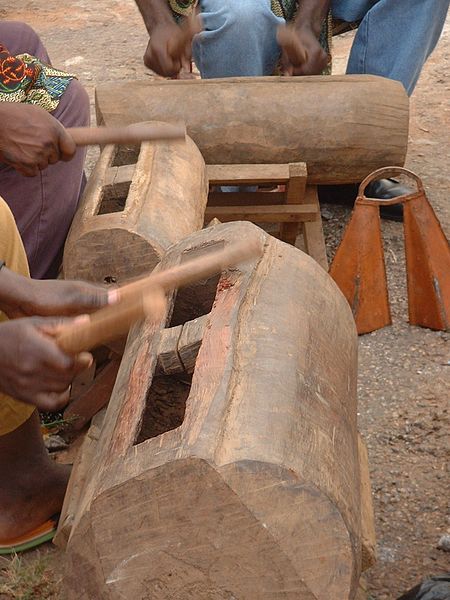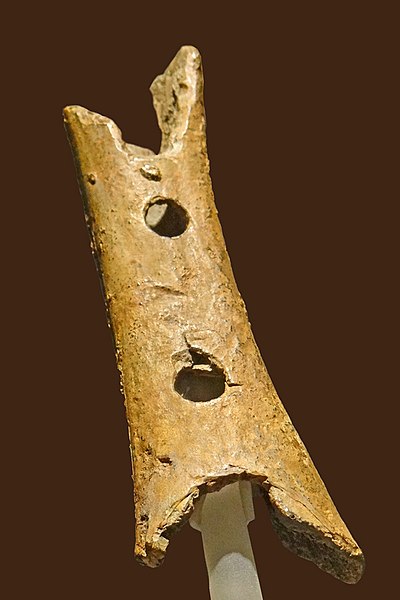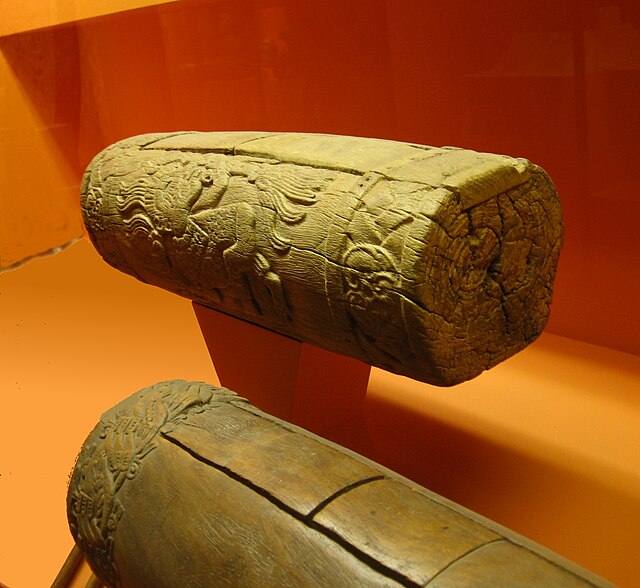Timpani or kettledrums are musical instruments in the percussion family. A type of drum categorised as a hemispherical drum, they consist of a membrane called a head stretched over a large bowl traditionally made of copper. Thus timpani are an example of kettle drums, also known as vessel drums and semispherical drums, whose body is similar to a section of a sphere whose cut conforms the head. Most modern timpani are pedal timpani and can be tuned quickly and accurately to specific pitches by skilled players through the use of a movable foot-pedal. They are played by striking the head with a specialized drum stick called a timpani stick or timpani mallet. Timpani evolved from military drums to become a staple of the classical orchestra by the last third of the 18th century. Today, they are used in many types of ensembles, including concert bands, marching bands, orchestras, and even in some rock bands.
A timpanist
Image: Timpani Range Individual
Walter Light pedal and chain timpani set up in three different combinations.
The inside, bottom of a Yamaha pedal timpano, showing the mechanical tension-adjusting system
A musical instrument is a device created or adapted to make musical sounds. In principle, any object that produces sound can be considered a musical instrument—it is through purpose that the object becomes a musical instrument. A person who plays a musical instrument is known as an instrumentalist. The history of musical instruments dates to the beginnings of human culture. Early musical instruments may have been used for rituals, such as a horn to signal success on the hunt, or a drum in a religious ceremony. Cultures eventually developed composition and performance of melodies for entertainment. Musical instruments evolved in step with changing applications and technologies.
Anne Vallayer-Coster, Attributes of Music, 1770. This still life painting depicts a variety of French Baroque musical instruments, such as a natural horn, transverse flute, musette, pardessus de viole, and lute.
Bamileke slit drum drummers in Cameroon's West Province.
Found in Slovenia, the Divje Babe Flute is sometimes considered the world's oldest known musical instrument
Two Aztec slit drums (teponaztli). The characteristic "H" slits can be seen on the top of the drum in the foreground.








